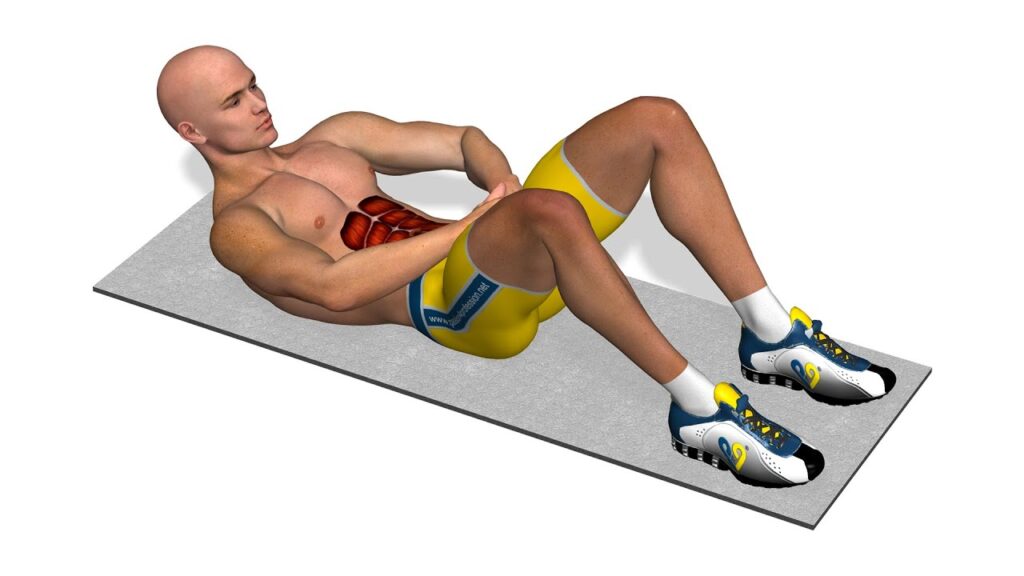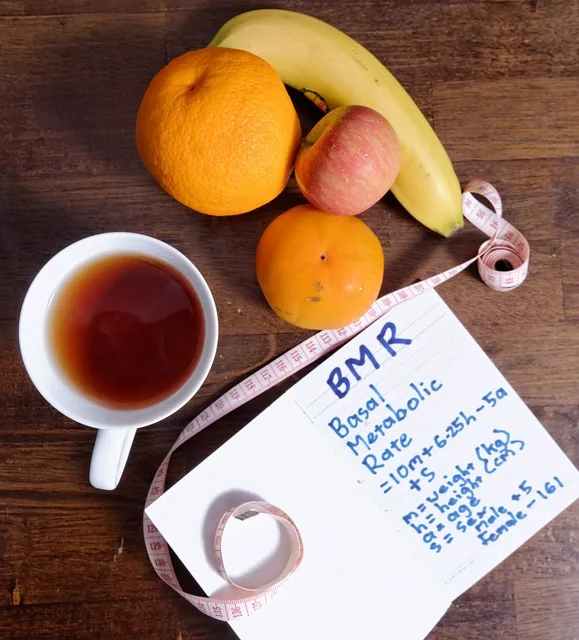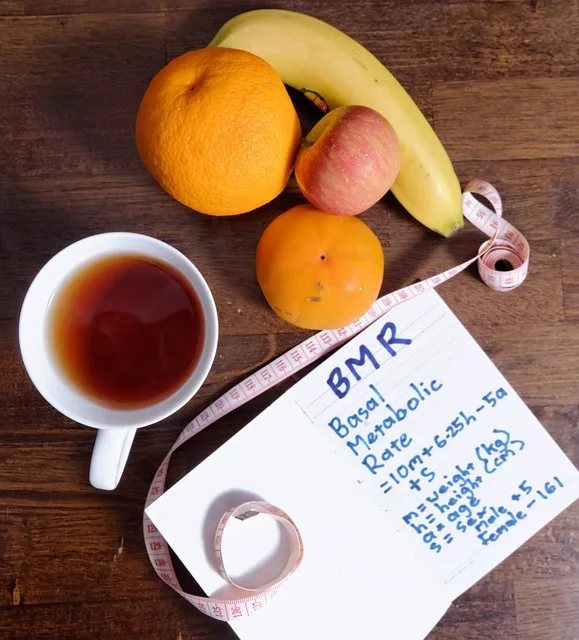These 12 weeks ab workouts cutting and conditioning plan can help you move towards your goals.
This article examines the best ”ab workouts” to give you defined abs, when you combine with healthy eating, a solid fitness plan, based on cutting and conditioning, specific workouts for your abs and core.
Doing hundreds of crunches will not give you the abs you want, but a thoughtful ab workouts plan performed over a sustained period of time, coupled with a structured diet with fat loss in mind. To achieve the holy grave of a lean, tight midsection, you must progressively strengthen your abs, burn the flab that hides them, and dial in your diet.
Abs anatomy information

“Six-pack“, is certainly not a scientific term. First, little anatomy information. Along with the muscles in the lower back, these prominent abs make up your core.
Rectus Abdominis:
The two paired sheets of muscles from the ribs to the pelvis that flex you forward. The rectus abdominis muscle is located in front of the body, starting at the pubic bone and ending at the sternum. It is located inside the abdominal area.
The muscle is activated while crunching as it pulls the ribs and pelvis in and bends the back. Muscles are also used as well when
- coughing,
- a child is delivered,
- during the bowel movements
- holding of the rectus abdominis breathing and pulling in the abdomen
When this muscle is exercised and the layers of fat from the abdomen disappear, the exposed rectus abdominis muscle takes the form of a “six-pack”.
These are the “six-pack” muscles most people think of as abs.
There are three muscles of the lateral abdominal wall –
- External Obliques
- Internal Obliques
- Transversus Abdominis
These muscles are fibrous connections that form the rectus sheath, which crosses over and under the rectus abdominis. When doctors perform an ultrasound-guided technique on patients (such as liver biopsy), they sometimes begin scanning at the rectus abdominis muscle to differentiate between the internal oblique, abdominis and peritoneal cavity.
External Obliques:
The outer layer of the abs on your edges; They run diagonally downwards. This oblique muscle is one of the largest parts of the trunk area. Each side of your body has an external oblique muscle.
The lowest part of it is connected to the upper corner of the pelvis (name called the crest of the ilium), the lower-front of the pelvis (pubis), and the linea alba, a band of fibers that runs vertically along the inside of your abdominal wall. Together, the external oblique muscles cover the edges of the abdominal area.
Internal Obliques:
The internal oblique is an abdominal muscle located just underneath the external obliques, these run diagonally up your sides. And this oblique muscle of the internal abdominal is located closer to the skin than the transverse abdominal muscle.
This oblique muscle originates in the lumbar fascia (a connective tissue that covers your lower back), the outer portion of the inguinal ligament (a ligament located on the lower-outer edge of the pelvis), and the back of the iliac crest (upper-outside portion of the pelvis).
The oblique muscle of the internal abdominal ends at the lower edge of the rib cage, the rectus sheath (the fibrous tissue that covers the abdominal muscles), and the pubic crest (the lower-front area of the pelvis).
This oblique muscle supports the abdominal wall, helps in forced respiration, helps increase pressure in the abdominal area, and rotates and turns the trunk with the help of other muscles.
The contraction of this oblique muscle also rotates the trunk and bends sideways by pulling the midline and rib cage towards the lower back and hip.
Transversus Abdominis:
The Transversus Abdominis is the deepest ab muscle, which wraps around the waist to support your spine.
Transversus abdominis is a broad-paired muscular sheet which is found on the lateral sides of the abdominal wall. Along with the external abdominal oblique and the internal abdominal oblique, it covers the lateral abdominal muscles. Combined with two anterior abdominal muscles (called rectus abdominis and pyramidalis), these muscles form an anterolateral abdominal wall.
As the name suggests, the fibers of the transversus abdominis are oriented transversely, perpendicular to the linea alba. The other abdominal muscles as well as transversus abdominis are important for maintaining normal abdominal tension and increasing intra-abdominal pressure.1
Serratus:
The serratus anterior is a muscle that originates on the surface of the first to eighth ribs at the edge of the chest and joins along the entire anterior to the medial border of the scapula. It is a fan-shaped muscle on the lateral wall of the chest.
Serratus anterior acts to pull the scapula forward around the thorax. This muscles in athletic bodies can also be seen to the naked eye with ribs underneath the axilla. Due to its course it appears “serrated” or “saw-toothed”.
The muscle has three segments:
- superior
- intermediate or medial
- inferior
The function of the serratus anterior muscle is to allow the forward rotation of the arm and the scapula to be pulled forward and around the rib cage. The Scapula is able to move laterally due to anterior serratus muscle, which is important for arm elevation. The serratus anterior muscle also allows the arm to rotate upward, which allows a person to lift objects on their head.
Intercostal muscles:
Intercostal muscles are several groups of muscles that run between the ribs, and help build and move the chest wall. The intercostal muscles are mainly involved in the mechanical aspect of the breathing process.
There are three layers:
- external intercostal muscles
- internal intercostal muscles
- innermost intercostal muscles
These muscles help to expand and shrink the size of the chest cavity to facilitate the breathing process. It’s innervated and supplied with blood by the intercostal veins, intercostal veins, and intercostal arteries. Other muscles are:
- scaleni
- subcostal
- transversus thoracis
The external intercostal muscles are liable for forced and quiet inhalation. They extend the ribs and expand the chest cavity, and originate from ribs 1 through 11, with insertion from the ribs 2 to 12.
The internal intercostal muscles are liable for forced exhalation. They depress the ribs and reduce space in the chest cavity. They originate from ribs 2 through 12, with insertions from ribs 1 through 11.
The Innermost intercostal muscles are the deepest among the intercostal muscles. They are separated from the internal intercostal muscles by a group of nerves and blood vessels known as nuerovascular bundle.
12 weeks ab workouts split
| Days | Workouts | On Empty Stomach |
|---|---|---|
| Monday | Upper ab and external obliques | Cardio |
| Tuesday | Lower ab and internal obliques | Cardio |
| Wednesday | Upper ab and external obliques | Cardio |
| Thursday | Lower ab and internal obliques | Cardio |
| Friday | Upper ab and external obliques | Cardio |
| Saturday | Lower ab and internal obliques | Cardio |
| Off day | Off | Off |
The 12 weeks ab workouts based on anatomy, the training regimen is broken into six days in one-week. Where on Monday, Wednesday and Friday we will target upper ab and external obliques muscles, whereas on Tuesday, Thursday and Saturday we will target the lower ab and internal obliques muscles.
This program is designed to fit your current fat loss workouts schedule; Schedule your regular training and cardio (as prescribed in ab workouts split in above; in empty stomach) routines and swap your normal ab workouts for these tasks six days a week, resting at least 48 hours between trained muscles.
Guidelines: This ab workouts plan is made for 16 to 60 years age group peoples. Make sure you are combining this ab workouts with any of your fat loss program and fix your existing diet as well. But to really modify a fat-burning furnace, it also takes a lot of dietary discipline. Do not leave any muscle group.
Monday + Wednesday + Friday: Upper ab and external obliques workouts
| Exercises | sets x reps x rest |
|---|---|
| (A) Superset (A1) Push through + (A2) Rope crunches | 3 x (15-20) reps each set rest= 45 seconds |
| (B) Superset (B1) Decline crunches + (B2) Wood chopper | 3 x (15-20) reps each set rest= 45 seconds |
| (C) Superset (C1) Side bend + (C2) Planks | 3 x (1 – 2) minutes each set rest= 45 seconds |
Tuesday + Thursday + Saturday: Lower ab and internal obliques workouts
| Exercises | sets x reps x rest |
|---|---|
| (A) Superset (A1) Reverse crunches + (A2) Hanging knee raise | 3 x (15-20) reps each set rest= 45 seconds |
| (B) Superset (B1) V crunches + (B2) Plank side to side | 3 x (15-20) reps each set rest= 45 seconds |
| (C) Superset (C1) Hanging side raise + (C2) Lower body twist | 3 x (15 – 20) reps each set rest= 45 seconds |
Instructions of ab workouts
1. Push through or Crunches with hands pushing through

This exercise is also known as Ab Push-Through or “Crunches with hands pushing through”. Push through crunches is one of the best exercise to train the Rectus Abdominis muscle (focus on your upper ab muscles).
How to do:
- Lie down on the back to keep knees bent and legs up, your feet on ground.
- Bring your hands close together in front of you and crunch up pushing hands through space between legs, continue pulsing and crunching abs, pushing hands together between through the legs.
- Be sure to breathe in and out of each rep, and focus on tightening your core muscle through each repetition, not on your neck.
- Pay attention on your form each lift as well. Extend your arms, but make sure you do so in a comfortable motion.
- If you feel any pain, stop exercising, especially in the lower back.
2. Rope crunches

Rope crunches is a killer ab exercise, focus on the muscles of the rectus abdominis or “six-pack”. This long flat structure is actually two muscles side by side, originating in the sternum and lower ribs, and entering the pubic bone.
How to do:
- Use a rope attachment on a cable machine and position yourself under it on your knees and facing the machine.
- Access and hold the rope, then pull it down, so it is level with your head.
- Essentially do an inverted crunch, lower your elbows to your mid-thighs, keeping your ab contracted while doing so. Then gently return to the starting position.
3. Decline crunches

Decline crunch is a calisthenics core exercise that primarily targets the rectus abdominis muscle.
How to do:
- Lie on a decline bench and secure your legs.
- Place your hands on either side of your head, keeping your elbows in.
- Push the small of your back-down into the bench and start rolling your shoulders off it.
- When you contract your stomach, press your lower back vigorously. Exhale while doing so. Your shoulders should only lift about 4 inches off the bench. Keep your lower back on the back.
- After holding the contraction for a second, slowly start coming back to the starting point. Inhale while doing so.
4. Wood chopper

The Wood chopper targets the transverse abdominis muscle and the oblique muscle. Wood chopper exercise also engages the muscles of the back, shoulders and legs.
How to do:
- Keep your body in such a way that the cable moves downwards and across the body—like a tree-chopping action. Keep the feet comfortably apart and hold the cable handle with both hands above one shoulder.
- Swing the clasped handle downward and across your body until it passes the opposite thigh. Your hips and knees may rotate slightly, and you may also pivot from the ankle.
- In the final position, allow the cable weight to retract the handle to the starting position.
- Do repetitions as prescribed in ab workouts routine, then reverse your stance by facing the other way and repeat the exercise on the other side of the body.
- Do not lock knees and hips. Allow your hips and knees to rotate slightly.
- Don’t bend your arms while doing this exercise or the shoulders and arms will work instead of the abdominal.
- Make sure you are rotating your torso and arms are facing your body, rather than it being the arms that are producing the motion.
5. Dumbbell side bend

The dumbbell side bend is a popular exercise for targeting the external obliques muscles of the abdomen. It aesthetically adds sweep and V-taper shapes to the sides of your waist.
How to do:
- Grasp a set of dumbbells and stand upright with a dumbbell in each hand, palms facing in.
- Place your feet firmly on the floor with shoulder width stance.
- Keeping your back straight and keeping your eyes facing forward, bend down to the right as far as you can go, then go back up.
- Without stopping at the top, bend down to the left.
- Always keep your back straight, your eyes forward, and only bend at the torso.
- Focus on the stretch and contraction of the oblique muscles (down the sides of your body).
- Keep the dumbbell close to your body.
6. Planks

Plank exercise can be used as the basis for strength and stability tests of core muscles. It can be as easy or difficult to make; It is your job to make the most of it. This means creating tension throughout the body. You want your whole body stiff to the plank, so you should maintain some tension in your shoulder blades, your upper arms, from elbows to shoulders, straight from the ground, straight through your core (obviously).
How to do:
- Start in the plank position, face down with your forearms and toes on the floor. Your elbows are directly beneath your shoulders and forearms are facing forward. Your head is relaxed, and you should look at the floor.
- Engage the abdominal muscles, pull your navel towards your spine. Keep your torso upright and rigid and keep your body in a straight line from ears to toes with no sag or bending. This is the position of the neutral spine. Make sure your shoulders are down, not creeping up toward the ears. Your heels should be over the balls of the feet.
- Hold this position as prescribed in ab workouts routine. Release to the floor.
- If you arch your back, you are not engaging your ab enough, and you are putting more weight on your arms. Check to make sure you are keeping your shoulders down and wide.
- Your hips will start to sink as soon as your ab reach their fatigue limit. This is a sign that it is time to end your plank. If it seems that your hips are scorching from the beginning, try to widen your legs a bit and focus on getting your abs engaged.
- Your neck should be in line with your body, not bent, which may put pressure on the neck. Place your gaze on the floor.
7. Reverse crunches

The reverse crunches is one of the most challenging abdominal exercises that targets the lower ab very well. Its main focus is to build strength in the core area of ab.
Reverse crunches help keep your core strong as it targets the most important muscle of the midsection. It targets the rectus abdominis with a primary focus on the lower abdominal muscles. It extends from your chest area to the pelvis. Traditional crunches mainly target the middle and upper abdomen. By performing reverse crunches, you are able to isolate your lower ab very well.
People shy away from this exercise because it is difficult to perform. However, those people who work on reverse crunches certainly notice the difference. This is a difficult variation of floor reverse crunches that also focus on the lower abs but are much easier to do. The reason is that it uses a lot of strength to pull the lower body up while maintaining constant tension on your abdominal muscles.
How to do:
- Using a decline bench, lie on your back with your head at the top of the bench, where your feet usually go.
- Next, hold the top of the bench with your both hands. Keep your legs straight together in the air, parallel to the floor to keep your abdomen there.
- Gently bring your pelvis up and towards your chest, so that your ab controls the movement.
- Slowly return yourself to the starting position while keeping constant tension on your abdominal muscles.
8. Hanging knee raise

The hanging knee raise is an excellent core training exercise to create the abdominal and hip flexor strength. Increasing basic strength and hypertrophy of those muscle groups can aid in movement such as squats, clean and snatch, bracing, and more.
The hanging knee challenges midline control and stability, similar to other hanging core exercises. It primarily targets the rectus abdominis muscle and diagonally, hip flexors and hip/spine stabilization.
How to do:
- Grip the bar around shoulder width with your hands. Increase the width if you are taller and your feet touch the floor.
- Once you are hanging with your feet slightly away from the floor, slowly pull your knees up while keeping your legs together.
- Hold for a second, and slowly bring your knees back to the starting position.
- Do reps as prescribed in ab workouts routine.
- You should do this exercise slowly. If you want to get the most benefit from lifting the hanging knee raise, then slow it down.
- As you become more advanced, you can place a dumbbell between your legs.
- Avoid swinging your body, keep your torso as close as possible.
9. V-crunches

When you do V-crunches, your chest can go below parallel, so when you do a regular crunches on the floor, your abs work at a greater range of motion. This makes the V-crunches a bit tighter, and is much more effective in building your ab.
V-crunches are better than the regular crunches because it forces your abs to remain tight during exercise, as you cannot rest your upper back on the floor. This is a mistake many beginners make, and it makes the regular crunches very easy, and not very effective at getting you six-pack abs.
How to do:
- Grab the bench from behind as you extend your legs and bend backwards as far as you can go, try to keep your legs straight and knees tight.
- Quickly bring your chest and legs to a V-shape position.
- Inhale as you move your leg, exhale as bring your knees in, not just move the legs only.
- You can challenge the oblique muscles by twisting the legs from the sides, a difficult variation being that you can balance the bench on your pelvic bone.
- Do the same movement hugging both knees as you come forward and flying the arms to the sides for balance as you lean back.
10. Plank side to side

Plank side to side is an amazing core body exercise that targets the arms, shoulders, and your core muscles, especially the obliques, while building strength on the shoulders and upper back. If you learn how to do Plank side to side correctly, you will get a tight waist and a strong mid-section.
How to do:
- Begin by lying on your right side with the forearm below the shoulder, with the body lifted and the legs long and the feet stacked.
- Keep the body straight, abs tight and place the left hand on the hip.
- Lower your hips towards the mat and lift it up using your oblique and core muscles.
11. Hanging side raise

Hanging side raise is an oblique crunch, variation of traditional hanging knee raise exercise, that strengthens the entire core including the lower ab, hip flexors, and lower back. This exercise specifically targets the obliques muscle while improving stability in the upper and shoulders.
How to do:
- Grab a pull-up bar with a shoulder-width overhand grip, ensuring that the arms are completely straight and therefore the feet are off the ground.
- Brace your core and use your abs to raise your knees towards your shoulders, as well as scooping or twisting your torso with one side and crunching the obliques.
- Return to the starting position and do reps as prescribed in ab workouts routine. Repeat on the opposite side.
12. Lower body twist

Straighten your legs, reaching the floor with your toes instead of the knees. Lower body twist or Windshield wipers are an advanced exercise. Do not try until you have mastered the more basic core movement pattern.
How to do:
- Begin on your back with the knees bent and raise your legs parallel to the ground.
- Place your arms on both sides of you, palms on the floor.
- Lower your legs as far as you can towards the floor.
- Raise them back to the center, then lower them to the other side.
- Try to keep your shoulders on the floor the whole time, so that your midsection twisting is the most focused.
- Repeat sets and reps as prescribed in ab workouts routine.
- For an additional challenge, instead of bending your legs, stretch straight into the air.
Ab workouts recommend: Diet for abs: Carb cycle, supplement stack game
- J Appl Physiol (1985). 1990 Mar;68(3):1010-6. Transversus abdominis muscle function in humans; A De Troyer, M Estenne, V Ninane, D Van Gansbeke, M Gorini; PMID: 2140344 DOI: 10.1152/jappl.1990.68.3.1010[↩]














